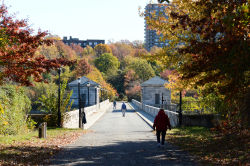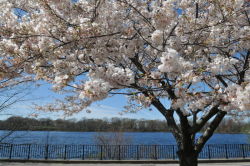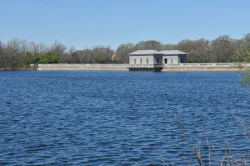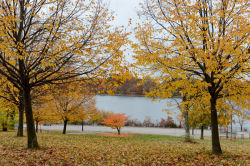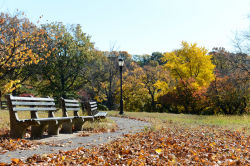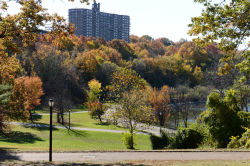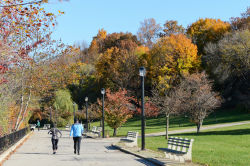Silver Lake Park
Silver Lake Park
Silver Lake Park, located on Staten Island’s north shore, is bounded by Forest Avenue, Victory Boulevard and Clove Road. The original Silver Lake was a spring-fed body of water formed at the end of the ice age, and now makes up the south basin of the reservoir at this site. Silver Lake was once known as Fresh Pond, but maps show that by the middle of the nineteenth century, the name Silver Lake had come into use and the two were used interchangeably until about 1860.
Silver Lake has a long history of both recreational and commercial uses. During the 19th century, a casino and saloon existed on the lakeshore and several companies harvested its ice. Staten Islanders used the lake for boating and ice skating in that era, and in February 1897, Silver Lake hosted the National Skating Amateur Championship races.
By the end of the 19th century, the population of Staten Island was growing rapidly and residents were calling for land to be set aside for parks. Noting that it was prohibitively expensive and time-consuming for families to visit Manhattan’s Central Park or Brooklyn’s Prospect Park, prominent Staten Island writer and resident John De Morgan appealed in February 1900 to the State Assembly Committee on Cities to appropriate funds to establish Silver Lake Park. “The people of the community have a right to recreation and pleasure grounds,” he addressed Assembly members in Albany, “Where . . . their children [can be] kept from the contaminating influence of the saloon.”
De Morgan’s plea to the State Assembly worked; the Silver Lake Park Commission was created and in their 1900 session legislators appropriated a modest amount for acquiring the land around the lake. The original parcels for Silver Lake Park around the perimeter of the lake were condemned and purchased in 1901, 1902, and 1904, at which point Staten Island parks officials began to convert the area to its current state.
As modern refrigeration replaced ice harvesting, in 1913 the lake was drained and converted to a working reservoir by the Board of Water Supply. The Board was created by the state legislature in 1905 to build the Catskill water supply system. In 1917 Silver Lake Reservoir became the endpoint of the city’s Catskill water supply system. The park’s underbrush began to be removed in 1921 and the natural oaks (Quercus), tulip trees (Liriodendron tulipifera) and sassafras (Sassafras albidum) were supplemented with shrubs, spruce (Picea) and pine (Pinus) trees, and flowerbeds. A January 1921 letter to the editor in the Staten Island Advance lamented the loss: “Nature [should be] encouraged rather than operated on [by Staten Island parks officials] who are so anxious to improve upon nature.”
Although the park’s scenery is dominated by the reservoir, other parts of the park are notable. Land from Marine Cemetery, a nineteenth-century burial site for the Marine Hospital Quarantine in Tompkinsville, was added to the park in 1924. In 1928 the land was converted to a golf course, and in 1994 researchers discovered documentation linking the site to its past use as a cemetery. Today it is thought that perhaps several thousand immigrants, including many Irish escaping Ireland’s Potato Famine, who died from contagious diseases after landing in the United States are buried under the 18th fairway of the golf course. The golf course itself was completed in 1929 and tennis, biking, softball, and playground facilities were added as Silver Lake Park became a recreational hub for the developing borough. “You can visit Silver Lake Park in your Sunday suit and come away untarnished,” a 1954 Staten Island Advance piece on the borough’s parks claimed. The reservoir was used for potable water until 1971 when an underground storage tank system was completed, the largest of its kind in the world. Today the reservoir is used as part of the drainage system for the tanks.
In 1988, Staten Island Borough President Ralph J. Lamberti provided $1.4 million for a new administration building and children’s play area. Again in 1997, Borough President Molinari allocated $700,000 to repave walkways and to add new plants, benches, fences, guiderails, play equipment, handball courts. Staten Island’s residents have enjoyed Silver Lake Park in its many incarnations for more than 150 years and doubtless will continue to enjoy its amenities for many years to come.
Check out your park's Vital Signs
Clean & Safe
Green & Resilient
Empowered & Engaged Users
Share your feedback or learn more about how this park is part of a
Vital Park System

